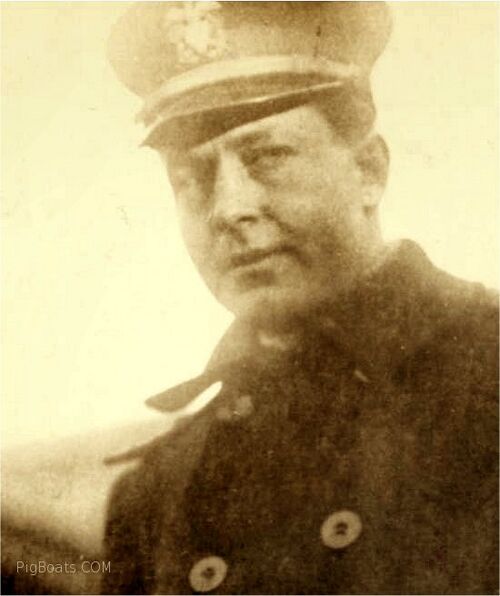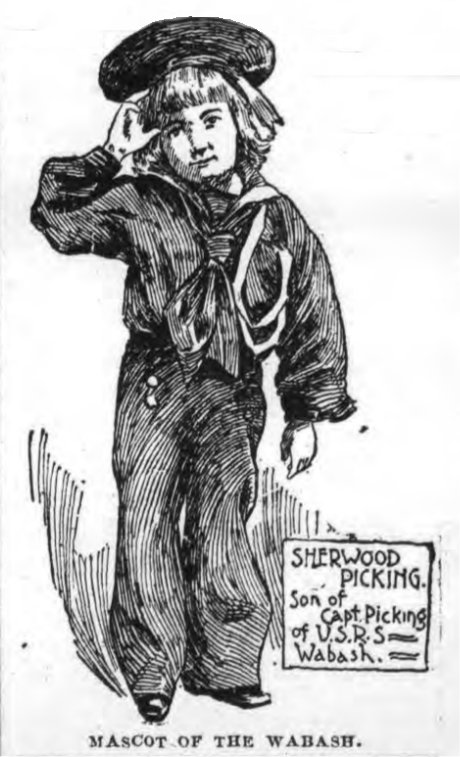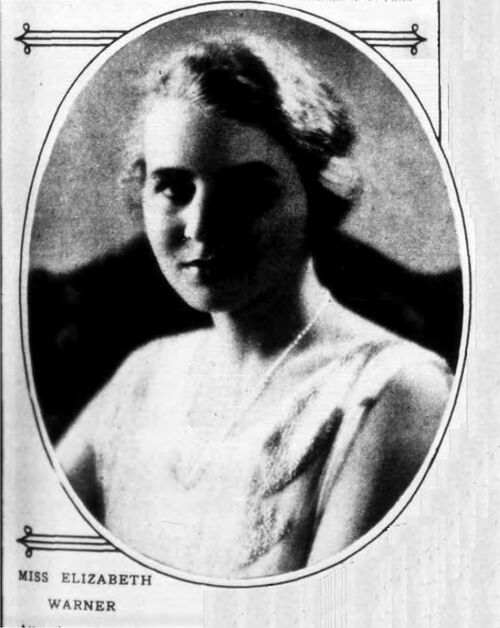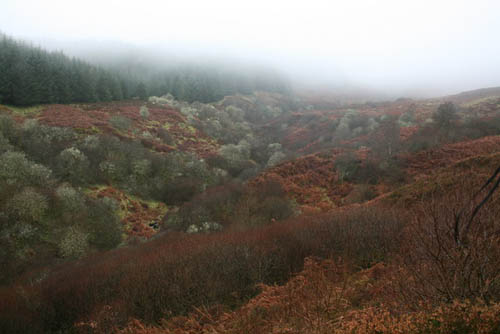Picking
Sherwood Picking

Sherwood Picking, born February 21, 1890, died September 1 1941, was a U.S. Navy officer who is described as a notable(?) submarine commander during World War I. He was a native of Baltimore, Maryland, and in his childhood grew up aboard the US Navy Receiving Ship, Wabash. His father Captain Picking was the commanding officer of the ship and lived aboard with his family.

A story was written about him by the Dobbs Ferry Register at age 8;
"Dobbs Ferry Register, NY 1898
MASCOT OF THE WABASH.
Eight-Year-Old Sherwood Picking of the Recruiting Ship Wabash.
Eight-year-old Sherwood Picking is the mascot of the United States recruiting ship Wabash, anchored off the Navy yard, says the Boston Herald. He has never received any certified commission from the Navy Department, yet he says he is the "...captain of the captain's launch..." He Is the son of Captain Picking, and is 8 years old. "Sherd," as he says his short name is, goes to school every day and returns on board with great dignity every after-noon. Besides being a dignified and popular ship's mascot, he is a born naval fighter."
He graduated from the U.S. Naval Academy in the class of 1911 on June 2nd. Picking was seemingly very highly thought of by his class mates as a formidable thinker and debater and throughly knowledgeable in all navy ships, types and armaments. His nickname at the academy was “Our Admiral”. Maybe an allusion to his father having been an Admiral and he having grown up in a Navy family.
After leaving the Naval Academy, he was assigned to the Battleship North Dakota, and reported aboard on July 6th 1911 as a Midshipman. On March 6, 1912, he was commissioned an Ensign.
On January 3, 1914, he was detached from the North Dakota and given orders to report to Asiatic Station to await orders. He sailed from San Francisco on February 6th and reported aboard the USS Decatur DD-5 at Cavite, Philippines on March 5, 1914. From there, he was detached to the USS Mohican, that served as the designated receiving ship at Cavite and stationary tender for the 1st Submarine Group, Torpedo Flotilla, Asiatic Fleet, for instruction in submarine duty.
He was then attached for further instruction to the Submarine A-7. He was also given command of the USS A-6 on August 4, 1914 and detached for command of the USS A-7. On September 15 was made the A-7 Commanding Officer. It seems it wasn't uncommon to have multiple commands and he had both the A-6 and the A-7 under his command until relieved for both on May 15, 1915 to command the USS B-2.
On July 2, 1915 he was commissioned to Lieutenant jg, retroactive to March 7, 1915.
On November 15, he was again placed in command of the A-6 in addition to his other duties.
On Oct 6 he was detached from all command duties and the B-2 and ordered to the USS Fulton AS-1 and reported aboard on January 2, 1917 for further submarine instruction. He was detached from Fulton on June 24, 1917 to the Fore River Shipyard to oversee the fitting out of the O-10.
He was appointed a temporary Lieutenant on July 1, 1917.
On September 11, 1917, he was assigned to oversee the fitting out of the submarines O-11 thru 13 and it seems he was to also command the O-11 though there is no record of this command.
In April, prior to the commissioning of the O-10, he was sent overseas to “Special Duty in European waters”. He returned on July 5th.
Lt. Picking was the commissioning CO of the USS O-10 on Aug 17, 1918 and made defensive anti-German submarine patrols off the US Eastern seaboard. On November 2/3rd, the O-10, part of a 20 sub contingent, departed Newport for service in European waters. However, before the ships had reached the Azores, the Armistice ended the fighting and the subs returned to the US. For his service during World War I, he was cited with a Navy Cross as a submarine commander.
'Interesting to note that all of the Commanding Officers of the O-class submarines that made the transit overseas in November 1918 (O-3 thru O-10) were awarded the Navy Cross, with the exception of the Commanding Officer of USS O-6, LCDR Carroll Q. Wright, Jr. who was awarded the Distinguished Service Medal, (probably for having been shelled by a British steamer and hit 6 times and surviving), which was higher in precedence than the Navy Cross until 1942.' (Wendy Gulley, curator Nautilus Museum Archives, Groton, Ct.)
Picking was detached from the O-10 on April 18, 1919 to the Fore River Yard to oversee the building of the USS S-5 and to take command of her upon commissioning.
On August 14, 1919 Picking was detached from the S-5 to the tender Fulton AS-1 in conjunction with the German submarine U-111 and later attached to the Bushnell in the same capacity. The U-111 had been surrendered at Harwich, England on November 20, 1918 after the Armistice and was one of five German U-Boats given to the US by the British to study. The U-111 had arrived in Philadelphia on April 20, 1919. The U-111 was used in Victory Bond drives and then taken to the Philadelphia Naval Shipyard in January 1920 and was inspected and machinery and equipment removed and tested in US submarines which Sherwood Picking seemed to be involved in. On May 18, 1920 Picking was assigned to the fitting out of the USS S-7 and placed her in commission on July 1, 1920.
Picking was detached from the S-7 on May 24, 1922 to become the Executive Officer of the tender USS Beaver. On July 10, 1922 he was commissioned a Lt. Commander. He was then ordered to the USS Chaumont, a transport ship, for delivery from San Pedro to Hampton Roads. Upon arrival, he was transferred to the Bureau of Aeronautics, Navy Department to be in charge of the Aeronautical Test Laboratory in Washington DC. He was detached from this assignment on June 15, 1923.
After 15 days leave, he reported to the Navy Yard Portsmouth, NH. On April 7, 1924 he was ordered to the fitting out of the new submarine V-1 (Barracuda) and placed her in commission on August 1, 1924.
Jan. 31, 1925 the Submarine V-1 found a merchant sailor clinging to a barrel near the Virginia Capes. The rescue, at dusk, of a Lascar* sailor, who had fallen from a British vessel near the entrance to the Virginia Capes and was almost exhausted. The V-l made the rescue at 6:30 P. M, 20 miles eastward of Thimble Shoals Light in Hampton Roads. He was delirious when picked up. Upon arrival off Cape Henry the pilot boat was requested to take charge of the man, and he was accordingly transferred. By wireless it was ascertained that he belonged to the steamship Lueric.
A story written up in the newspapers have this to say: "Faizalli Mshrshacca, 20, a Lascar* fireman in the British steamer Luceric, which came into Norfolk, Va., recently, had been denied shore leave and was determined to land in America. So when the ship was passing Thimble Shoals he threw a keg overboard and jumped after it, clinging to it through the chilly dawn. The submarine B-1 (V-1) was proceeding down the harbor and sighted the Lascar, still clinging to his keg. He was almost frozen, but he fought against rescue and was subdued by force. The submarine carried the man to Cape Henry and placed him aboard the pilot boat Relief, which hastened to overtake the Luceric, and put the man back aboard her as she passed through the Virginia Capes."
(*A Lascar was a derogatory term, now out of fashion, for a sailor or militiaman from the Indian subcontinent, Southeast Asia, the Arab world, British Somaliland or other lands east of the Cape of Good Hope who was employed on European ships from the 16th century until the mid-20th century.)
While Picking was in command of the V-1 in the spring of 1926, nearing the end of a transit from Key West to Portsmouth, near Provincetown, Mass., the submarine, while surfacing from a dive struck an object and the whole submarine shuddered from the impact. Upon reaching the surface, investigation reveled that the V-1 had collided with a 58 foot whale and had broken the whales back and killed it. The whale was still partly wrapped around the bow while on the surface. The submarine towed the whale to Provincetown so the locals could view it then towed it back to sea to sink.

On June 25, 1927 Sherwood Picking and Elizabeth Warner were married by clergyman named William Safford Jones at Portsmouth. NH. They eventually had 3 children; oldest being Frances Picking, second, Henry Picking, b; Feb, 28, 1931 d; Feb 22, 2013; and Elizabeth, Picking, b; 1933, d, 2013. Research is incomplete but Elizabeth Warner is thought to have been the sister of the first Asst. Secretary of the Navy, Edward P. Warner.
June 6, 1928 Picking was an usher at the wedding of an naval officer, possibly from his submarine, Lt. James S. Foskett (later Rear Admiral and Naval Aide to President Truman ) to a Miss Florence Kane.
On August 1, 1927, Picking was detached from the V-1 and was transferred to the Bureau of Ordnance in Washington DC, where he stayed until July 8, 1929, when he was given command of the destroyer USS J.E. Paulding. He stayed there until November 11, 1930 when he was transferred to the battleship Arizona in the position of First Lieutenant. He remained with the Arizona until June 24, 1931 when he was transferred to the Bureau of Engineering at the Navy Yard in Washington, DC from where he was then, again, transferred to be the Naval Inspector of Machinery at Electric Boat in New London, Groton, Conn. Where he stayed until May of 1934.
In 1932, he was made a full Commander and also picked up additional duties as Inspector of Navigational Materials in New York and Inspector of Ordinance during the building of the USS Cuttlefish.
On June 1, 1934, he reported aboard the USS Texas as First Lieutenant where he was until August 2, 1934, when he was appointed as the Commander Submarine Squadron Five and the Commander Submarine Division Ten. He stayed there until July 3, 1936, when he was transferred to the Harvard University Naval Officers Training Unit until 1939.
On January 30, 1939 he became the Commander of Submarine Squadron Three and Commanding Officer of the Coco Solo Submarine Base in Panama. On July 1, 1939 he was commissioned a full Captain.


In April of 1941 he was ordered to the Office of Chief of Naval Operations, Navy Department, Washington, DC, as the Assistant Director of Naval Intelligence. He was ordered to London on temporary duty. He was to work for Captain Charles Lockwood. While in route, the plane in which he and nine other people were riding, crashed into the side of a mountain near Campbeltown, Scotland at about 11:30 AM. All were killed. He was cremated on September 5, 1941, and returned to the US for burial.
Thanks to James Haas for assisting in research.
Thanks to Wendy S. Gulley, Archivist, Submarine Force Museum, Robert Cressman, Wolfgang Hechler, Ron Reeves and many more I can't recall at this time.
Thank you to Wendy Gulley and the Submarine Force Museum for the Image used.
Page created by:
Ric Hedman & David Johnston
1999 - 2023 - PigBoats.COM©
Mountlake Terrace, WA, Norfolk, VA
webmaster at pigboats dot com
